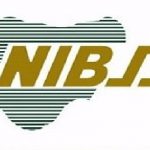In today’s digital landscape, cloud computing has become integral to business operations, offering flexibility, scalability, and cost savings. However, with these advantages come significant security challenges. As organizations increasingly rely on cloud services, the need for robust cloud security solutions has never been more critical. This article explores various cloud security solutions, their importance, and how they can safeguard sensitive data and applications in the cloud.
Understanding Cloud Security
Cloud security refers to the policies, technologies, and controls deployed to protect data, applications, and services hosted in cloud environments. It encompasses a wide range of practices aimed at ensuring confidentiality, integrity, and availability of data in the cloud. Given the increasing frequency of cyber threats and data breaches, implementing effective cloud security measures is essential for organizations of all sizes.
Key Categories of Cloud Security Solutions
1. Cloud Access Security Broker (CASB)
A Cloud Access Security Broker (CASB) acts as a gatekeeper between users and cloud service providers. CASBs provide visibility into cloud usage and enforce security policies to manage risks associated with shadow IT (the use of unauthorized applications). Key features include:
- Data Encryption: Protects sensitive data in transit and at rest.
- Threat Protection: Monitors for malware and other threats.
- Compliance Management: Ensures adherence to regulations like GDPR and HIPAA.
Notable Solutions: Bitglass, CipherCloud.
2. Secure Access Service Edge (SASE)
SASE combines networking and security functions into a single cloud-based service. This model supports remote work by providing secure access to applications regardless of user location. Key components include:
- Zero Trust Security: Assumes that threats could be internal or external.
- Real-Time Policy Enforcement: Adapts security measures based on user behavior.
Notable Solutions: Cato Networks, Zscaler.
3. Identity and Access Management (IAM)
IAM solutions control user access to cloud resources based on defined roles and permissions. They help mitigate risks associated with unauthorized access through features such as:
- Multi-Factor Authentication (MFA): Adds an extra layer of security.
- Single Sign-On (SSO): Simplifies user access while maintaining security.
Notable Solutions: Okta, Microsoft Azure Active Directory.
4. Data Loss Prevention (DLP)
DLP solutions monitor data flows to prevent unauthorized access or leaks of sensitive information. They analyze outgoing traffic and enforce policies to protect critical data assets. Key features include:
- Content Inspection: Scans files for sensitive information.
- Policy Enforcement: Automatically blocks or encrypts data transfers based on predefined rules.
Notable Solutions: Symantec DLP, McAfee DLP.
5. Threat Intelligence
Threat intelligence solutions gather and analyze information about potential cyber threats to proactively defend against attacks. These tools provide insights into emerging threats and vulnerabilities, enabling organizations to strengthen their defenses.
Notable Solutions: Recorded Future, ThreatConnect.
6. Security Information and Event Management (SIEM)
SIEM systems aggregate security data from various sources within the cloud environment to provide real-time monitoring and incident response capabilities. They help detect anomalies, track compliance, and support forensic investigations following incidents.
Notable Solutions: Splunk, IBM QRadar.
7. Cloud Workload Protection Platforms (CWPP)
CWPPs focus on securing workloads deployed across public, private, or hybrid clouds. They provide visibility into vulnerabilities and compliance status while protecting applications from threats throughout their lifecycle.
Notable Solutions: Orca Security, Palo Alto Networks Prisma Cloud.
8. Firewall as a Service (FWaaS)
FWaaS replaces traditional firewalls with cloud-based solutions that offer advanced threat prevention capabilities. These services simplify management while enhancing security across distributed cloud infrastructures.
Notable Solutions: Fortinet FortiGate Cloud, Barracuda CloudGen Firewall.
Conclusion
As organizations continue to migrate to the cloud, implementing robust cloud security solutions is paramount for protecting sensitive data and ensuring compliance with regulations. By leveraging a combination of CASBs, IAM systems, DLP tools, SIEM platforms, and other specialized solutions, businesses can effectively mitigate risks associated with cyber threats while maintaining the flexibility that cloud computing offers.Investing in comprehensive cloud security strategies not only safeguards assets but also fosters trust among customers and stakeholders in an increasingly digital world. With the right tools in place, organizations can confidently harness the power of the cloud while minimizing potential vulnerabilities.















 and then
and then